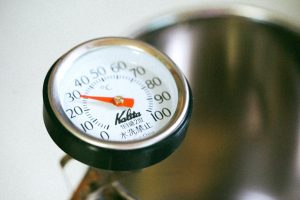Anger is a powerful emotion that can be overwhelming. If a person doesn’t manage anger, it causes devastation in relationships. Anger is often how we respond to situations of distress. We feel angry when:
- we feel overwhelmed
- we’re under pressure
- our boundaries are violated
- we feel slighted and hurt
- our core beliefs and valued opinions are challenged
These moments of distress and crisis can be springboards for our mental, emotional, and relational maturity, but only if we handle our anger appropriately. When a person is in distress, he or she can turn toward harmful behaviors to cope. The result is often that these harmful behaviors damage relationships and the overall well-being of the person. Santa Clarita Christian Counseling provides faith-based support to help individuals navigate anger and distress in a healthy way, fostering healing and stronger connections.
When someone says or does something that angers you, the appropriate response is this:
- pay attention to what has happened
- register your own emotional response
- process that response
- respond in a constructive way to maintain or reassert your boundaries
Do this all without hurting or denigrating the other person.
This isn’t how it normally goes down, because when anger washes over you, the response is often instinctive and not always pleasant for the person on the receiving end. One way to begin dealing constructively with anger, whether you’re trying to help your young child, teen, or another adult, is to use an anger thermometer.
What is an anger thermometer?
 An anger thermometer is a tool that you can use to explore and help manage anger. A regular thermometer is used to measure and record the temperature. An anger thermometer serves a similar function, just regarding anger.
An anger thermometer is a tool that you can use to explore and help manage anger. A regular thermometer is used to measure and record the temperature. An anger thermometer serves a similar function, just regarding anger.
It helps a person articulate how intensely he or she is feeling about his or her anger. It can also indicate what an appropriate response to the situation might be. It’s flexible enough to be useful for people of all ages, from adults all the way to young children.
An anger thermometer can help in a variety of ways, including helping to enrich a person’s vocabulary related to angry feelings so they can better articulate it to themselves and others around them. It can also help a person begin learning to identify what triggers anger, as well as know some of the thoughts and behaviors that typically accompany anger.
For younger children that are coming to grips with their feelings, an anger thermometer can help them start to make connections between how their bodies respond to anger and the intensity of their anger.
Finally, an anger thermometer can also help a person not only have clear coping strategies to manage his or her anger but a way to assess how anger is affected by implementing various coping strategies. Once you know which coping strategies are most effective for you, that will help you rein in your anger better.
Why would you create an anger thermometer to manage anger?
Feelings of anger are subjective. What makes you feel livid may just be a mild irritation for someone else. How you express your anger when you feel different levels of anger will also differ from another person.
 An anger thermometer helps you manage anger, and identify how your own anger works. It’s also a way to let other people around you know as well. When you know someone, you learn their quirks and how they tick. That’s great, but sometimes even that intuition born of experience is fallible. An anger thermometer is a visual aid that allows one to see what the other is feeling without the guesswork involved.
An anger thermometer helps you manage anger, and identify how your own anger works. It’s also a way to let other people around you know as well. When you know someone, you learn their quirks and how they tick. That’s great, but sometimes even that intuition born of experience is fallible. An anger thermometer is a visual aid that allows one to see what the other is feeling without the guesswork involved.
Whether a person is a young child or an adult, it isn’t always easy to identify feelings and put a name to them. Younger children need help identifying feelings and making a connection between those big feelings and their behavior.
If a person recognizes how an escalation in feelings leads to less control and more potential harm, he or she can intervene using the appropriate coping skills. A child may not understand all of this but having a simple visual tool like an anger thermometer can help him or her begin to learn how emotions work, and that he or she is not at the mercy of those emotions. These are vital life lessons to learn.
An anger thermometer is a simple visual tool to help you process and cope with anger. Being able to name emotions allows you to begin processing that emotion. It creates a gap in which you can process your thoughts and feelings, giving you needed distance so that you’re not reacting blindly or out of instinct.
Developing the capacity and vocabulary to identify feelings is a crucial step in getting in control over your feelings so that you can respond to them in an appropriate manner. This is just as true of children as it is of teens or adults.
How to create your own anger thermometer to manage anger.
 There are different kinds of anger thermometers one can create, with varying levels of complexity. For a teen or an adult, an anger thermometer might look like using a numbering system (such as 1-3, 1-5, or 1-10) to measure the intensity of feeling and attach specific labels that name that level of feeling. Lower levels of intensity can be named annoyed or irritated, and higher levels may be frustrated, furious, or enraged.
There are different kinds of anger thermometers one can create, with varying levels of complexity. For a teen or an adult, an anger thermometer might look like using a numbering system (such as 1-3, 1-5, or 1-10) to measure the intensity of feeling and attach specific labels that name that level of feeling. Lower levels of intensity can be named annoyed or irritated, and higher levels may be frustrated, furious, or enraged.
Attached to these labels may be the bodily responses that signal distress, such as shallow and rapid breathing, balled fists, flushed face, raised voice, clenched jaw, rapid heartbeat, and so on.
When you have labeled the various reactions, you can place a few coping strategies alongside these that will be helpful to deal with anger. These may include taking deep breaths, having a drink of water, walking away, taking a time-out, engaging in soothing self-talk, counting to 10 or higher, talking to a parent or teacher, getting some exercise, and so on.
For a young child, this process needs to be simple. Some people use a traffic light approach, with three colors to represent if they are feeling okay (green), getting irritated (amber), or angry (red). Thermometers that include drawings of faces to represent various stages of anger are also quite helpful for younger children.
Another approach is to have a thermometer and divide it into three sections which will designate whether they are slightly, really, or very angry, for example. Next to each of these, you can place the kinds of behaviors in which they typically engage when they are feeling these big feelings, such as growling, stomping their feet, raising their voice, throwing things, or screaming.
Talk with them to break this down, giving them prompts when necessary, so that they can connect the feelings with certain behaviors.
 The last part is then to walk them through various coping strategies they can use to release their anger and calm down. These may include doing some jumping jacks, taking a deep breath, having a sip of water, or going to sit quietly away from the situation. Each of these coping mechanisms can be matched for the level of anger at which they are most effective, and that will be a trial-and-error process to see what works best for your child.
The last part is then to walk them through various coping strategies they can use to release their anger and calm down. These may include doing some jumping jacks, taking a deep breath, having a sip of water, or going to sit quietly away from the situation. Each of these coping mechanisms can be matched for the level of anger at which they are most effective, and that will be a trial-and-error process to see what works best for your child.
The idea of the anger thermometer for a child or an adult is that they can use it in the moment and in the aftermath of an incident to identify feelings and think through the appropriate responses so that they can learn to manage anger. If your child can tell you what she’s feeling (like a 7 out of 10 on the anger scale), she is more aware of what she is feeling.
You can then come alongside her in ways that will help her, such as disengaging from a distressing conversation and giving her space to breathe and calm down. The same goes for an adult in your life who doesn’t have his or her anger under control, or if you are the one who struggles with anger.
Manage anger through the help of Christian counseling.
Being able to handle your anger and express it in healthy ways is not only good for you, but for the people around you. That goes for everyone, no matter their age, gender, or station in life. If you or a loved one struggle with expressing or coping with anger, don’t hesitate to take steps to begin addressing it. The anger thermometer is just one tool of many that you can begin using to get anger under control.
There are many reasons why people struggle with anger and walking with a mental health professional such as a Christian counselor can help you understand why you struggle with anger. Your counselor will help you discern unhealthy and negative behaviors and patterns of thought that may be feeding your anger. You will learn how to substitute these for healthy, more positive patterns.
Counseling is available for adults, teens, and young children. Your counselor will create a safe space in which to explore these feelings and deal constructively with them. Getting your anger under control is the healthy choice that will bring flourishing and wholeness to your life.
If you or a loved one struggles with anger, reach out today and enquire about Christian anger management at Santa Clarita Christian Counseling. That decision will help you and your loved ones find the peace and joy God desires for you.
“Thermometer”, Courtesy of Jaroslaw Kwoczala, Unsplash.com, CC0 License; “Thermometer”, Courtesy of Bianca Ackermann, Unsplash.com, CC0 License; “Thermometer”, Courtesy of Kaffeebart, Unsplash.com, CC0 License; “Thermometer”, Courtesy of Manki Kim, Unsplash.com, CC0 License
-
Kate Motaung: Curator
Kate Motaung is the Senior Writer, Editor, and Content Manager for a multi-state company. She is the author of several books including Letters to Grief, 101 Prayers for Comfort in Difficult Times, and A Place to Land: A Story of Longing and Belonging...
DISCLAIMER: THIS ARTICLE DOES NOT PROVIDE MEDICAL ADVICE
Articles are intended for informational purposes only and do not constitute medical advice; the content is not intended to be a substitute for professional medical advice, diagnosis, or treatment. All opinions expressed by authors and quoted sources are their own and do not necessarily reflect the opinions of the editors, publishers or editorial boards of Stone Oak Christian Counseling. This website does not recommend or endorse any specific tests, physicians, products, procedures, opinions, or other information that may be mentioned on the Site. Reliance on any information provided by this website is solely at your own risk.


